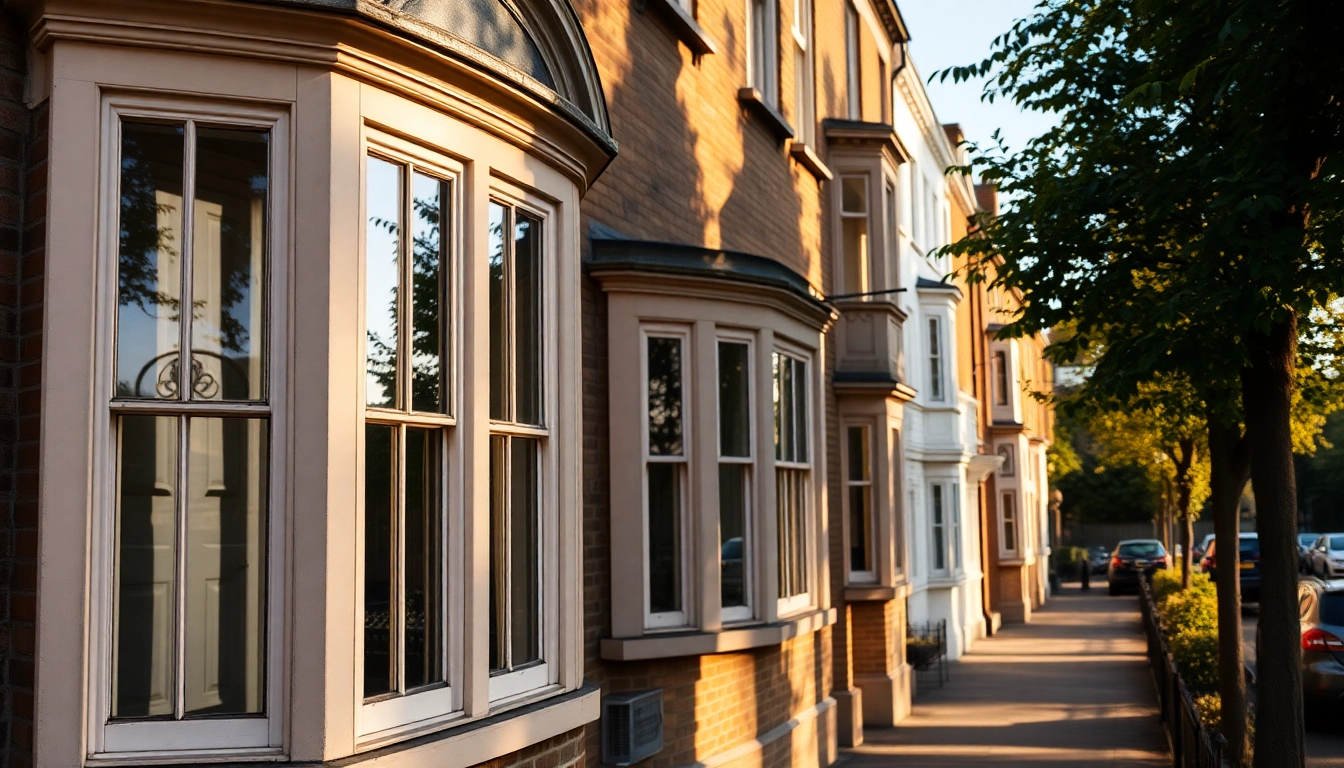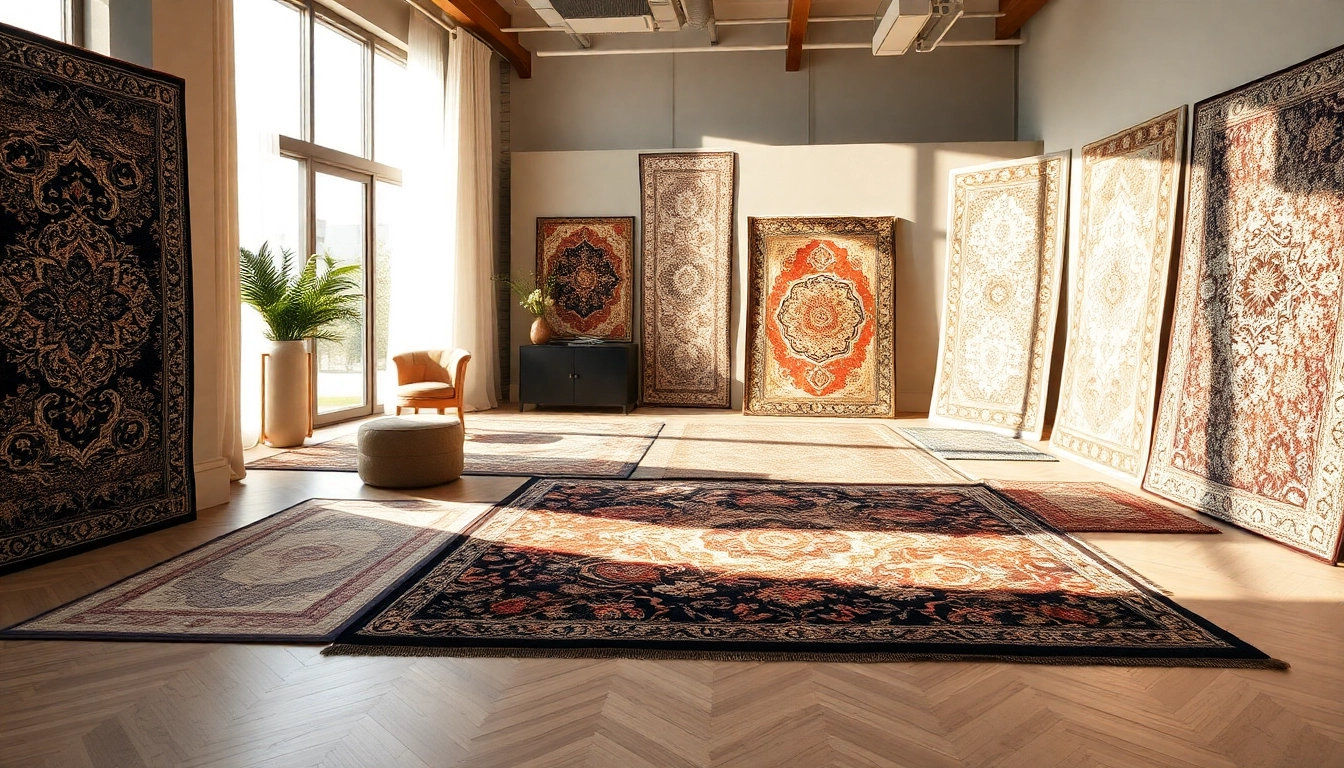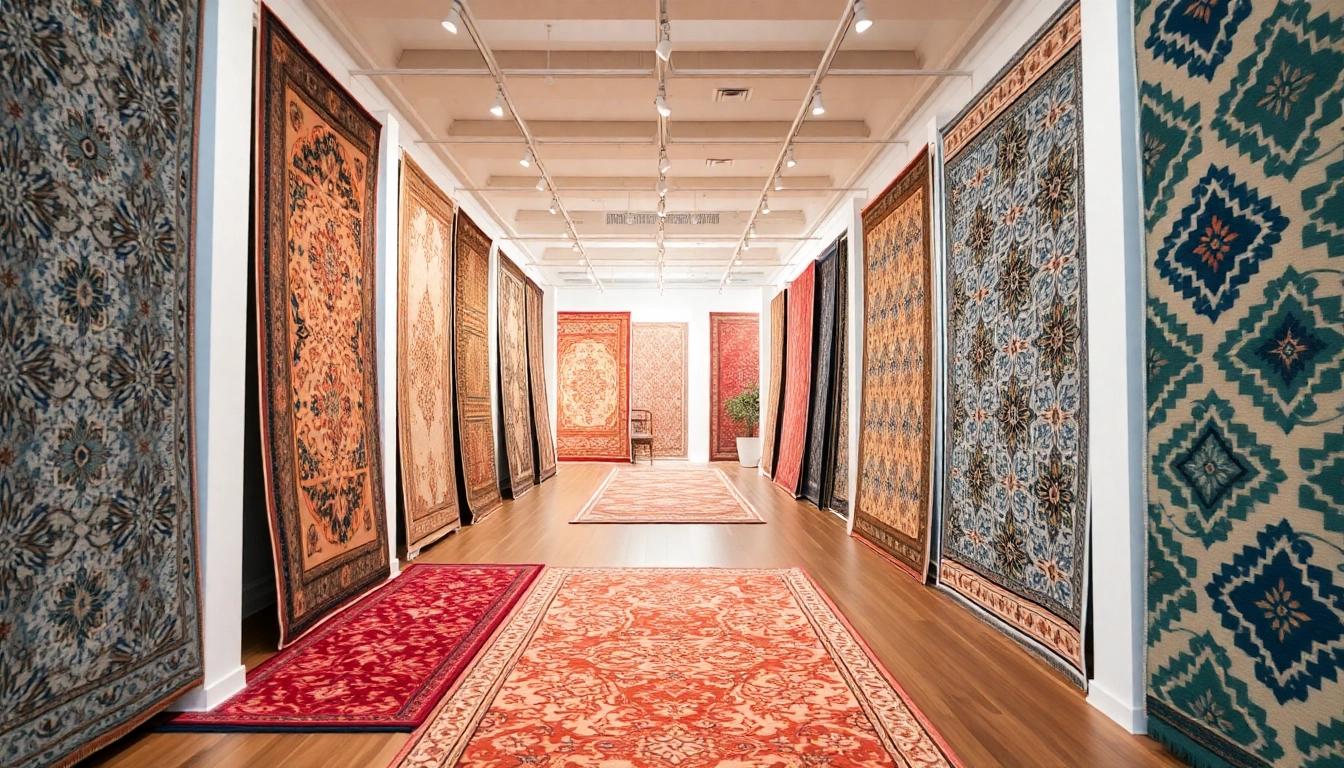
Understanding the Significance of Listed Building Sash Windows
Listed buildings stand as proud symbols of a nation’s architectural heritage, embodying history, craftsmanship, and cultural identity. Among the most iconic features of these historic structures are sash windows, a timeless design element that has persisted for centuries, particularly prominent in Georgian, Victorian, and Edwardian architecture. For property owners and conservationists alike, understanding the importance of sash windows within listed buildings is crucial—not only for preservation but also for maintaining the integrity of heritage properties.
Listed building sash windows are more than mere aesthetic features; they are vital vestiges of historical craftsmanship. These windows serve as tangible links to the past, reflecting the architectural styles and building techniques of their respective eras. Preservation of such windows ensures the continuity of historical narratives and supports the cultural significance that makes each listed building unique.
Historical importance of sash windows in listed buildings
Sash windows originated in the 17th century and became widely popular during the 18th and 19th centuries, particularly in the UK. Their distinctive design—comprising one or more movable panels (sashes) that slide vertically—offered an innovative approach to ventilation and aesthetic appeal. In many listed buildings, sash windows are integral to the architectural style, contributing to the building’s character, symmetry, and period authenticity.
Historically, sash windows symbolized refinement and sophistication, often crafted from timber with intricate detailing. They were assembled with skillful joinery techniques, including lightweight timber frames, leaded or stained glass, and decorative glazing bars that added to their visual appeal. Because of their craftsmanship and historical significance, these windows are now protected under heritage conservation laws.
Their significance extends beyond aesthetics; sash windows often played practical roles in daily life, facilitating natural ventilation and daylight. In many cases, original sash window frames, sashes, and hardware remain in place as enduring artifacts of period construction. Preserving these enhances the authenticity of listed buildings, ensuring that their historical narratives remain intact for future generations.
Legal regulations for listed building window replacements
Legal regulations surrounding sash windows in listed buildings are stringent to ensure preservation of their historical and architectural integrity. In the UK, any work involving windows—whether repairs, replacements, or alterations—requires formal consent known as Listed Building Consent (LBC). This process is overseen by local planning authorities and aims to safeguard the character and appearance of the historic property.
Replacement of original sash windows with modern or alternative materials can be a complex process, involving detailed applications and adherence to conservation standards. The key concern is maintaining the building’s authentic features while complying with safety, energy efficiency, and environmental legislation. For example, installing uPVC windows in a listed building is often scrutinized and may be permitted only if they replicate the original design closely and meet specific conservation criteria.
Additionally, the Guidelines for the Conservation of Historic Buildings recommend that repairs and restoration should be prioritized over replacement, and if replacement is necessary, using sympathetic materials that match the original is paramount. Failure to obtain proper permissions can result in enforcement actions, substantial fines, or orders to reverse unauthorized work.
Therefore, engaging with heritage consultants and securing expert advice ensures that your project aligns with legal requirements, protects your investment, and upholds the heritage value of the building.
Impact of sash windows on heritage preservation
Sash windows have a profound impact on heritage preservation because they embody the architectural spirit of their era. Their preservation helps retain the visual coherence and historical integrity of listed buildings, which is essential for maintaining the character of historic neighborhoods and districts.
Removing or replacing sash windows with modern alternatives can significantly diminish the building’s authentic appearance, risking the loss of architectural value. Conservation practices, such as repairing existing sash frames, reglazing with period-appropriate glass, and draught-proofing, allow property owners to improve energy efficiency without compromising heritage value.
Modern interventions—like double glazed sash windows—must be carefully designed to blend conservation with contemporary performance standards. Industry standards advocate for maintaining original sash windows where possible and opting for sympathetic modern replacements only when necessary.
Ultimately, preserving sash windows is not merely about aesthetics; it is about safeguarding a tangible link to the past, ensuring sustainable management of heritage assets, and fostering a sense of identity and continuity within historic communities.
Choosing the Right Sash Windows for Listed Properties
Materials and design options for compliance
When selecting sash windows for listed buildings, choosing the right materials and design options is critical to ensure compliance with heritage standards. Traditionally, timber has been the material of choice due to its authenticity, durability, and visual appeal. Timber sash windows, crafted with period-appropriate profiles and detailing, are typically favored for conservation projects.
However, advances in manufacturing have introduced alternative materials like uPVC and aluminum. While uPVC sash windows are popular due to low maintenance and improved energy efficiency, their use on listed buildings is often controversial unless they mimic traditional timber features closely. Some manufacturers offer bespoke uPVC or aluminum sash windows with authentic timber finishes and slim frames to meet conservation guidelines.
Design options include traditional vertical sliding sash windows with multi-pane glazing, decorative horns, and fine glazing bars, which replicate historical aesthetics. For compliance, it is essential that these design features align with the building’s original style and the local conservation officer’s requirements.
Modern vs. traditional sash window styles
The debate between modern and traditional sash window styles centers on balancing heritage authenticity with functional performance. Traditional sash windows typically feature timber frames, multiple glazing panes, and period-appropriate hardware—elements that contribute to their historic integrity.
Modern sash windows may incorporate double or triple glazing, draught-proofing, and low-maintenance materials, offering improved energy efficiency and user comfort. The challenge lies in sourcing modern designs that do not compromise aesthetic authenticity—particularly in structures where planning and conservation guidelines strictly regulate appearances.
Custom-designed solutions, blending a period-appropriate look with modern performance, have become increasingly popular. Such windows utilize slimline frames, authentic hardware, and period-specific details to accurately replicate original sash windows while delivering superior thermal insulation and security.
Custom solutions that blend period authenticity with energy efficiency
Innovations in window manufacturing have enabled bespoke solutions that preserve the historical look of sash windows while enhancing energy efficiency. For example, heritage double glazing combines slim sightlines with high-performance glass units, reducing heat loss and external noise.
Additionally, custom timber sash windows can be manufactured with advanced coatings, draught-proofing systems, and weather seals that do not detract from their traditional appearance. These solutions allow property owners to meet modern standards for sustainability and comfort, complying with regulations without sacrificing the building’s aesthetic.
Implementing such tailored solutions requires collaboration with specialists experienced in heritage conservation, ensuring that modifications are both legally permissible and visually seamless.
Expert Installation and Conservation Practices
Planning permissions and approval processes
Obtaining planning permission is a fundamental step in installing or modifying sash windows in listed buildings. The process involves submitting detailed proposals—including drawings, photographs, and technical specifications—to the local planning authority. It is crucial to engage early with conservation officers to understand specific requirements and concerns.
The approval process often involves a public consultation and review of how the proposed work aligns with the character of the building and the surrounding area. Demonstrating efforts to preserve original features and adopting sympathetic materials can facilitate smoother approval.
Professional guidance can significantly streamline this process; experts in heritage planning can prepare comprehensive applications, advise on suitable materials, and liaise with authorities to secure necessary consents.
Best practices for preserving original craftsmanship
Preserving craftsmanship is central to heritage conservation. Best practices include careful removal and repair of existing sash frames, using traditional carpentry techniques, and sourcing period-appropriate hardware. Repairing rather than replacing original components respects the craftsmanship and contributes to authenticity.
When replacement is unavoidable, selecting bespoke replication of original details ensures continuity. Skilled craftsmen can recreate decorative glazing bars, sash horns, and early hardware, maintaining the building’s historic integrity.
It is essential that all conservation work adheres to the Secretary of State’s Conservation Principles and industry standards to preserve the cultural value embedded in each sash window.
Reglazing, draught-proofing, and maintenance tips
Routine maintenance extends the life of historic sash windows. Reglazing with Georgian or antique-quality glass maintains authenticity, while modern secondary glazing options can improve insulation discreetly. Draught-proofing, a critical energy-saving measure, involves installing silicone or brush seals to prevent heat loss without damaging the original frames.
Regular inspection for wood rot, deterioration, or hardware failure allows timely repairs. Cleaning and repainting timber frames with breathable, conservation-grade paints preserve the timber and prevent moisture infiltration.
Certified conservation specialists can advise on appropriate products and techniques to balance preservation with functional performance, ensuring sash windows sustain their role in heritage buildings for decades to come.
Cost, Regulations, and Funding Opportunities
Estimated costs for listed building sash windows
Costs associated with restoring or installing sash windows in listed properties vary widely depending on size, materials, and complexity. Traditional timber sash window restoration can range from £2,000 to £5,000 per window, including repair, reglazing, and painting, with bespoke designs or larger windows incurring higher costs.
Modern, custom solutions with sympathetic uPVC or aluminium frames may be somewhat more affordable initially, but it is essential to ensure they meet conservation standards.
For comprehensive projects, including full replacement or bespoke restoration, budgets should also account for planning fees, surveyor consultations, and specialist labor.
Consulting with heritage window specialists enables accurate cost estimations and helps prioritize work based on importance and budget constraints, ensuring value and compliance.
Government grants and grants for heritage restoration
The UK government and various local authorities offer grants and funding schemes to support heritage restoration projects, including sash window preservation. These may encompass grants for listed building works, conservation area treatments, or energy efficiency upgrades.
Examples include the Heritage Lottery Fund and local conservation grants, which require detailed applications demonstrating the historical significance of the work and its adherence to conservation principles.
Securing funding involves working with heritage consultants and providing comprehensive project proposals that outline conservation methods, materials used, and the project’s impact on heritage qualities.
Compliance with safety, energy, and regulations standards
Achieving compliance reflects balancing heritage preservation with modern safety, environmental, and energy standards. For instance, installing double-glazed sash windows improves thermal performance but must be carefully designed to preserve the original appearance.
Safety standards mandate hazard-free hardware, secure locks, and fire safety measures where appropriate.
Regular inspections ensure ongoing compliance, and working with certified conservation installers guarantees adherence to all relevant legislation and best practice standards.
Case Studies and Customer Success Stories
Restoration projects demonstrating heritage fidelity
Numerous successful projects showcase how carefully executed sash window restoration can enhance heritage value. For example, a Grade II listed Georgian townhouse underwent a meticulous reglazing and draught-proofing process, restoring their original timber sash windows with historically accurate glass and hardware. The project not only preserved aesthetics but also improved energy efficiency.
Such cases demonstrate that respectful refurbishment, utilizing traditional materials and craftsmanship, maintains the authenticity while delivering modern benefits.
Innovative solutions for complex listed building challenges
Innovative approaches address challenges like restricted planning permissions or structural complexities. A Victorian conversion in London employed custom slimline double-glazed sash windows that matched original profiles and received planning approval. Similarly, bespoke aluminum sash windows with period detailing provided long-term durability without visual compromise.
These solutions exemplify how modern technology and craftsmanship can work together to meet heritage standards while satisfying functional and safety requirements.
Testimonials from satisfied heritage property owners
Property owners frequently express satisfaction after restoring their sash windows, noting enhanced property value, improved comfort, and the preservation of historical charm. Testimonials highlight the importance of working with experienced specialists who understand conservation nuances and legal frameworks.
Many owners emphasize the importance of choosing sympathetic materials and expert installation to ensure the longevity of their investments and the continued character of their homes.







